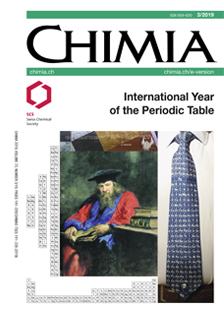The Gestation and Growth of the Periodic Table
DOI:
https://doi.org/10.2533/chimia.2019.144PMID:
30890209Keywords:
Actinides, Lanthanides, Mendeleyev, Periodic tableAbstract
The development of ideas of chemical periodicity from Lavoisier to Mendeleyev's first periodic table of 1869 is surveyed. Although his first periodic table contained a number of errors and weaknesses, his remarkable predictions of the properties of several then unknown elements, together with his capacity to adapt the table to new discoveries, slowly led to its general acceptance. The theory of atomic structure slowly developed to a point where it could rationalise the structure of the table which had, however, been established solely on the basis of experimental observations. Chemistry has played the central role, up to and including the final modification of Seaborg to introduce the actinides – although this had been foreseen by Alfred Werner! Finally we discuss the many physical forms in which the table has been presented.Downloads
Published
2019-03-27
Issue
Section
Scientific Articles
License
Copyright (c) 2019 Swiss Chemical Society

This work is licensed under a Creative Commons Attribution-NonCommercial 4.0 International License.
How to Cite
[1]
D. A. Johnson, A. F. Williams, Chimia 2019, 73, 144, DOI: 10.2533/chimia.2019.144.







